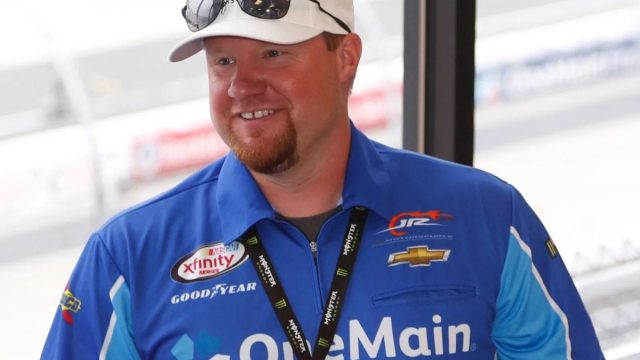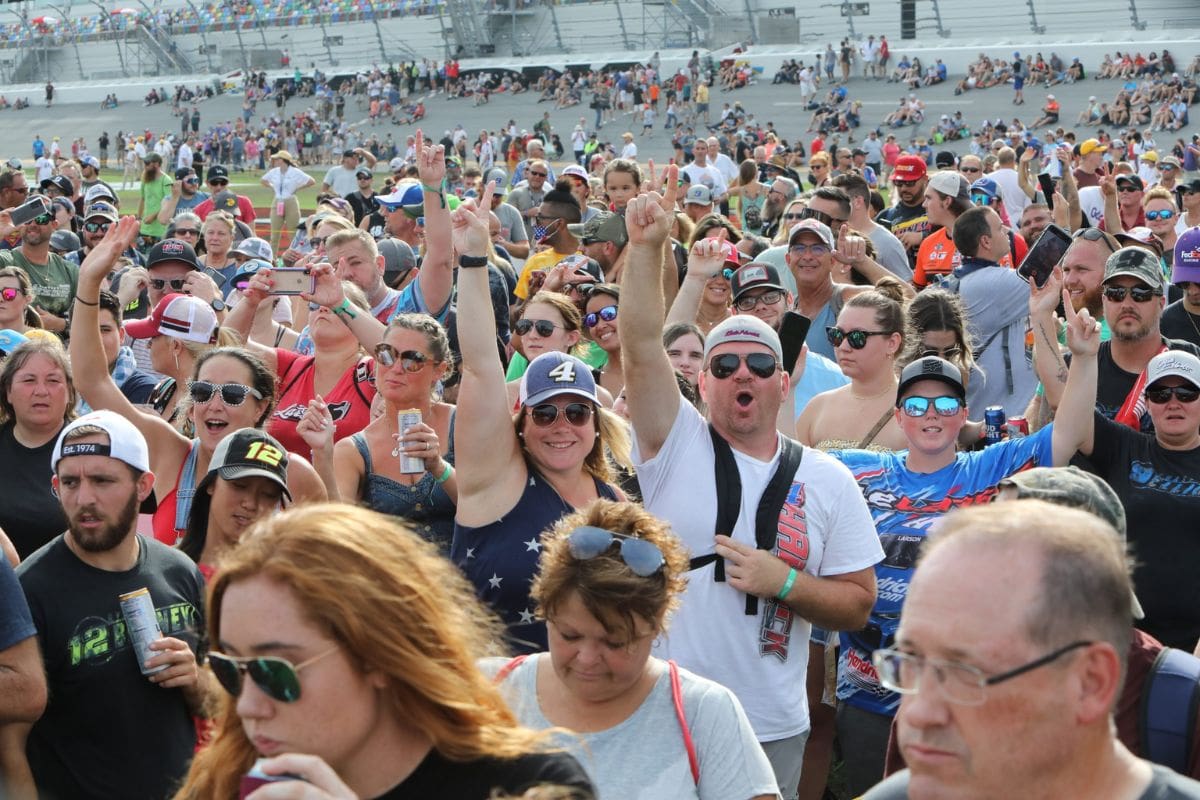Brett Griffin Slams Goodyear for Indianapolis Problems: Brett Griffin’s assertion that Goodyear is primarily responsible for the ongoing challenges at the Indianapolis Motor Speedway raises substantial questions about the interplay between tire performance and fan engagement in NASCAR. By pinpointing the tire issues that plagued the 2020 race, Griffin suggests a causal link between product reliability and the erosion of spectator enthusiasm. As nostalgia for past events wanes, the stakes for both Goodyear and the sport intensify. What implications does this have for future races, and how will stakeholders respond to this growing discontent?
Key Highlights
- Brett Griffin attributed declining attendance at Indianapolis to Goodyear’s tire performance issues impacting race excitement and integrity.
- He emphasized nostalgia for the oval experience, contrasting it with the lack of thrill in recent road course events.
- The 2020 race suffered from tire-related challenges, leading to blowouts and driver retirements, fueling discontent among fans.
- Griffin highlighted the emotional disconnect between fans and the sport due to repeated tire failures affecting race outcomes.
Return of NASCAR to Indianapolis Motor Speedway
The recent return of NASCAR to the Indianapolis Motor Speedway has reignited passionate discussions among fans and industry insiders, emphasizing both the venue’s storied legacy and the complexities surrounding its previous withdrawal from the racing schedule. This iconic track, known as the ‘Brickyard,’ has long been considered a crown jewel of motorsports, drawing large crowds and generating immense excitement. The attendance of over 70,000 spectators at the latest event highlights its enduring appeal.
However, the initial withdrawal of NASCAR from this prestigious venue raises critical questions about the factors contributing to the decline in interest. Analyzing the previous years of racing at Indianapolis reveals a combination of diminishing fan engagement, evolving competition formats, and challenges in providing a thrilling on-track experience. The lack of compelling races, coupled with arguably below-average tire performance, led to a perception that the races lacked the excitement that fans associate with NASCAR.
Furthermore, the surrounding communities demonstrated their enthusiasm for the return of NASCAR, evidenced by the display of race flags in local neighborhoods. This suggests a deep-rooted connection between the sport and its fans, stressing that the fervor remains, albeit complicated by past disappointments.
As NASCAR reestablishes its presence at Indianapolis, it faces the dual challenge of rekindling the passion of its fan base while addressing the factors that led to its previous exit. The path forward will necessitate a careful examination of race dynamics and fan engagement strategies to guarantee the venue’s continued significance in the NASCAR calendar.
Brett Griffin’s Take on the Withdrawal
Brett Griffin’s perspective on the withdrawal from Indianapolis highlights the remarkable impact that tire performance, particularly attributed to Goodyear, had on fan attendance and general race excitement. His assertions suggest that the dissatisfaction stemming from tire issues greatly contributed to diminished spectator interest, ultimately influencing NASCAR’s decision to cease racing at the historic oval.
Griffin pointedly remarked about the return of fans, noting that over 70,000 attendees showed up, driven by nostalgia for the oval experience. However, he emphasized that the decline in attendance was rooted in the ‘Goodyear tire debacle,’ suggesting an emotional disconnect between fans and the sport due to previous tire-related failures.
I think 70,000-plus people showed back up yesterday because they missed the oval, and they stopped coming because of the Goodyear tire debacle. I don’t care what anybody says; they got pissed off, they got their feelings hurt. I don’t blame them, and now I think they’re just happy to see it back where it belongs. I know the place didn’t look slammed, but I’m telling you, everywhere I went yesterday—trying to get in and out of tunnels and walking through the garage—it was packed.” – Griffin
Key insights from Griffin’s commentary include:
- Fan Sentiment: Frustration over tire performance led to decreased attendance and engagement.
- Nostalgia vs. Reality: The emotional attachment to the oval contrasts with the lack of excitement surrounding the road course.
- Historical Context: Griffin, a seasoned spotter, recalls the thrill of past races, highlighting the cultural importance of the oval.
“But as I was walking down there, having spotted it for 20 years at the oval and almost won it with Elliott Sadler a couple of times, and watching my good friend DJ win it, I didn’t have that same feeling in my heart because it was the road course; you know what I mean?” – Griffin
Issues with Goodyear and the 2020 Race
Tire-related challenges during the 2020 race at Indianapolis highlighted critical failures in Goodyear’s performance, leading to widespread frustration among drivers and fans likewise. The introduction of a new left-side tire combination, while retaining the right-side tires from the previous year, proved to be a miscalculation. This setup was ill-suited for the high downforce, long straightaways, and raised temperatures characteristic of the Indianapolis Motor Speedway. The result was a series of tire blowouts that compromised the integrity of the race.
Notably, prominent drivers such as Denny Hamlin, Erik Jones, and Alex Bowman faced considerable setbacks, with Hamlin describing the race as a “roulette” due to the unpredictable nature of tire durability. This unpredictability affected nearly half the field, resulting in premature retirements and diminished competition. Conversely, Kevin Harvick and Stewart-Haas Racing exhibited resilience, demonstrating that not all teams were comparably impacted by Goodyear’s shortcomings.
Controversy Surrounding Kyle Larson’s Win
Controversy erupted following Kyle Larson’s victory at the Brickyard 400, primarily due to NASCAR’s contentious decision to keep the race green despite a late-race crash involving Ryan Preece. This decision has raised questions about the integrity of race officiating and the perceived favoritism towards certain drivers, particularly Larson, who has faced scrutiny as NASCAR’s so-called ‘golden boy.’
Ryan Preece spun with two laps remaining in the #Brickyard400.
The caution flew after Kyle Larson took the white. pic.twitter.com/AxGKMa6h4G
— NASCAR on NBC (@NASCARonNBC) July 21, 2024
Several factors have contributed to the uproar surrounding Larson’s win:
- Timing of the Crash: Preece’s crash occurred on the final lap, a critical moment that typically invites a caution flag.
- Perception of Favoritism: Fans have pointed to Larson’s previous leniency during the ‘double’ attempt as evidence of NASCAR favoring him.
- Driver Reactions: Some drivers, including Brad Keselowski, expressed that on any other day, such an incident would have warranted a caution.
Larson’s initial victory at the Brickyard 400 should have been a defining moment in his career; however, the circumstances surrounding it have overshadowed the achievement.
While Sawyer’s remarks attempted to clarify the reasoning behind the decision, the lasting implications on NASCAR’s credibility and fan trust remain to be seen.
“Obviously we’d like for it to play out naturally. We want our teams to race to the checkered flag. We did everything we possibly could. We kept an eye on the #41. He got turned around. He was really giving a solid effort and once he came to a stop and we could tell that he had, I think, a flat left-rear tire he wasn’t going to move. We’d already taken the white, we just couldn’t run by there again. So it was unfortunate, but it was the right call.” – Sawyer’
Fans and Drivers’ Reactions
How fans and drivers respond to the aftermath of the Brickyard 400 reveals deep-seated frustrations regarding the perceived inconsistencies in NASCAR’s officiating and the implications for race integrity. The reaction, particularly from drivers like Ryan Blaney, highlights a growing sentiment that pivotal calls may have been influenced by narratives rather than fairness.
The incident where Blaney dropped an expletive directed at Kyle Larson exemplifies the emotional volatility surrounding the race. This discontent is further amplified by questions surrounding the timing of cautions and the shuffling of cars post-pit stops, which some drivers argue diminishes competitive fairness.
Such responses encapsulate a broader concern within the NASCAR community: the need for clarity and consistency in race regulation. As the sport continues to evolve, addressing these grievances will be vital to restoring faith in race integrity and officiating.
News in Brief: Brett Griffin Slams Goodyear for Indianapolis Problems
The evaluation of tire performance issues at Indianapolis, as articulated by Brett Griffin, emphasizes a critical concern within NASCAR.
The emotional disconnect between fans and the sport, exacerbated by notable incidents such as the 2020 race, highlights the necessity for Goodyear to improve tire reliability.
Restoring fan confidence and engagement hinges on addressing these performance challenges, which directly impact the complete experience and perception of racing at this historic venue.
ALSO READ: Brett Griffin’s Strategy to Revive Hailie Deegan’s Stagnant Career



